Low light conditions should not stop you from exerting your green thumb and becoming a plant parent.
Even without direct sunlight, there is a lengthy list of low-light houseplants that will survive in your west- or east-facing windowsills or rooms.
Here is a roundup of the most popular low-light houseplants.
Table of Contents
1. Cast Iron Plant
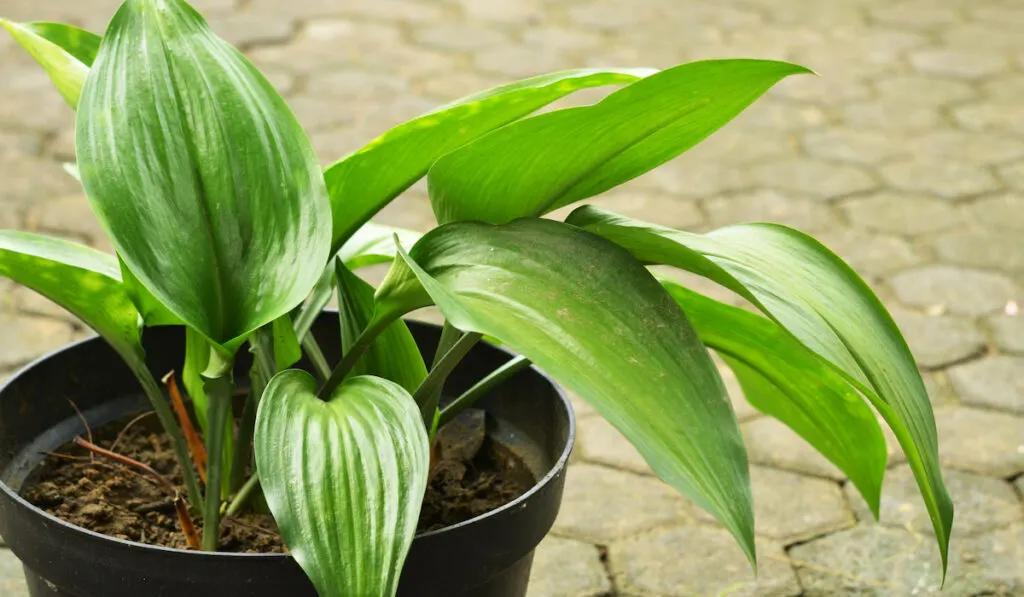
The cast iron plant is a renowned low-light houseplant, and for good reason — it is pretty much indestructible and requires little to no care.
A cast iron plant’s sturdy and low-maintenance nature makes it a great option for brown thumbs who want to add some life to dimly lit rooms.
Simply place it near a north-facing window away from direct sunlight to avoid burning its glossy, deep green foliage.
While it can tolerate little to no water, we recommend you water whenever the soil feels dry to the touch.
- Light conditions: Partial to full shade
- Safety: Fully safe for humans and pets
- Mature size: 2 feet wide and 3 feet tall
2. Snake Plant
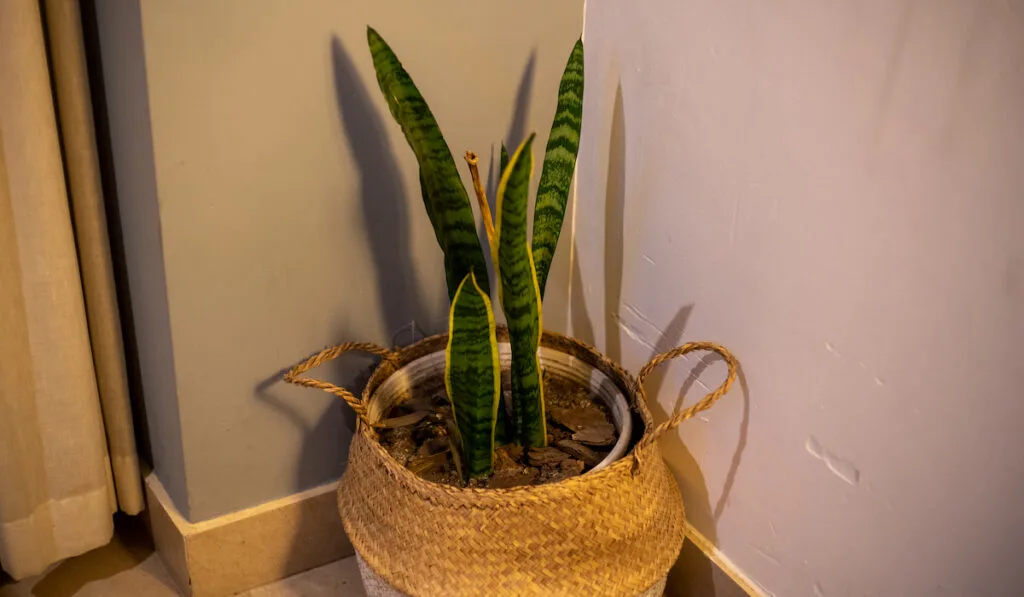
Besides thriving in low-light conditions, snake plants are hardy and drought-resistant houseplants.
They can go for extended periods without water and prefer moderate to low-light conditions. As such, they will be happy anywhere within 10 feet of a south- or west-facing window.
Some variegated varieties may need a brighter light level to maintain a vibrant leaf color.
As with most plants, be careful when watering your snake plant.
Too much water can cause root rot, especially in shady conditions where there is no sunlight to actively dry the soil.
Please be aware that snake plants are highly toxic to humans and pets. Be sure to place them out of the reach of pets and small children.
- Light conditions: Partial to full shade
- Safety: Toxic to pets and humans
- Mature size: 8 feet tall
3. Ivy
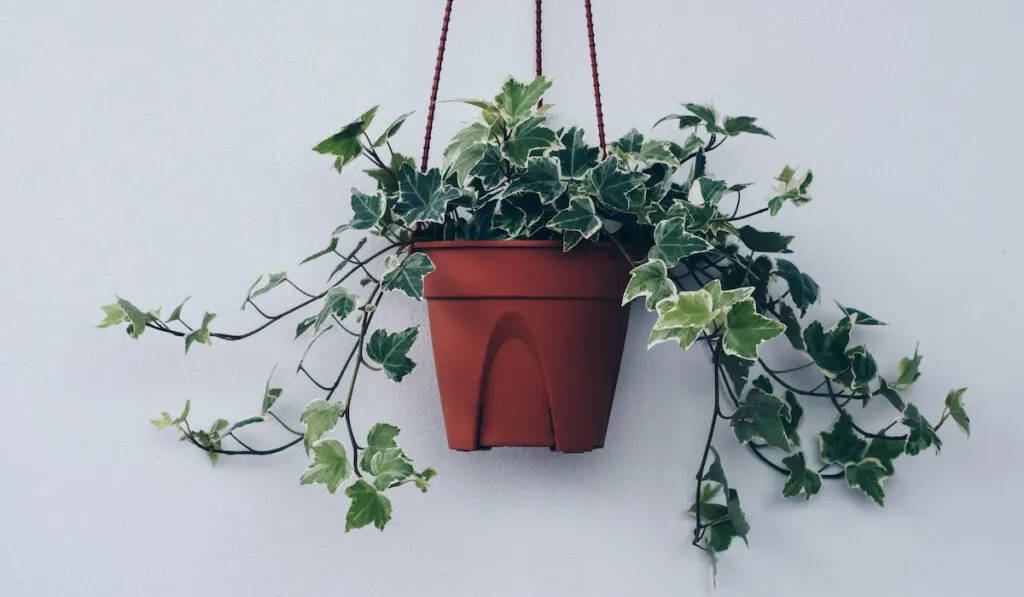
You can never go wrong with an Algerian or English ivy in your poorly lit rooms. English ivy, especially, offers the perfect cascading trails with its light green or variegated foliage.
Alternatively, you can grow it outdoors as a ground cover if it receives indirect light.
All in all, English Ivy appreciates cool nights and regular mists to maintain humidity and keep spider mites at bay.
Ivy will make your room look lush while purifying the air. Lastly, water your ivy just before the soil dries out.
- Light conditions: Partial to full shade
- Safety: Toxic to humans and pets
- Mature size: As large as you allow it to grow
4. Anthurium
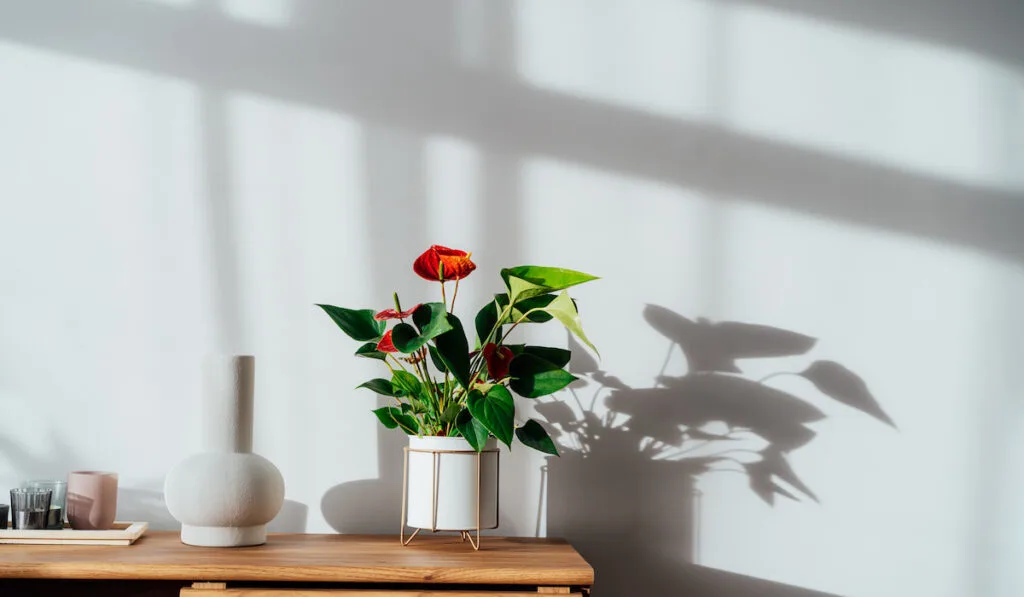
Anthuriums will gracefully brighten up your space throughout the year with beautiful white, red, pink, purple, and orange blossoms as long as you place them in a bright spot with indirect sunlight.
Anthurium can tolerate low light conditions, as long as the soil remains consistently moist.
While the plant may blossom less in low light conditions, its bright green foliage will provide a vibrant display.
- Light conditions: Partial to full shade
- Safety: Toxic to pets and humans
- Mature size: 12 inches wide, 18 inches tall
5. Prayer Plant
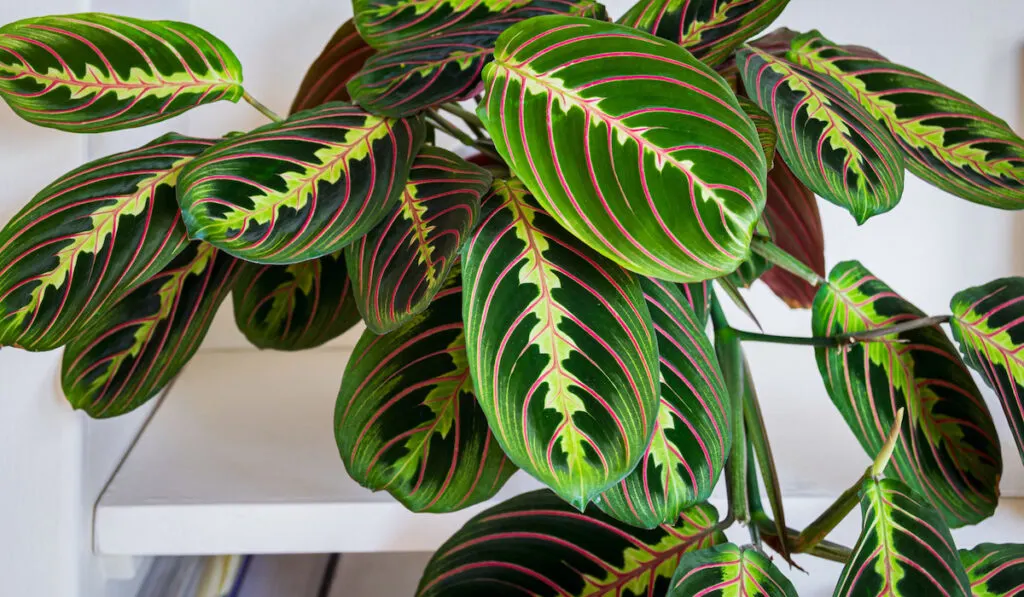
The prayer plant is the perfect choice for anyone looking for a low-growing houseplant. It can tolerate shady conditions but will do best in bright, indirect light.
Prayer plants cannot withstand cold temperatures.
This plant has variegated cream, green, and pink foliage that will burn when exposed to direct sunlight.
Prayer plants love high humidity and well-drained soils.
- Light conditions: Partial to full shade
- Safety: Non-toxic to pets and humans
- Mature size: 12 inches tall
6. Monstera

What better way to add a bold tropical statement than with the Monstera plant?
It is certainly a showstopper that will thrive on a bright window or room corner with indirect light.
That being said, it will tolerate most light conditions and has the bonus of purifying and keeping your air clean.
- Light conditions: Partial shade
- Safety: Toxic to pets
- Mature size: 3 feet tall and spread
7. ZZ Plant
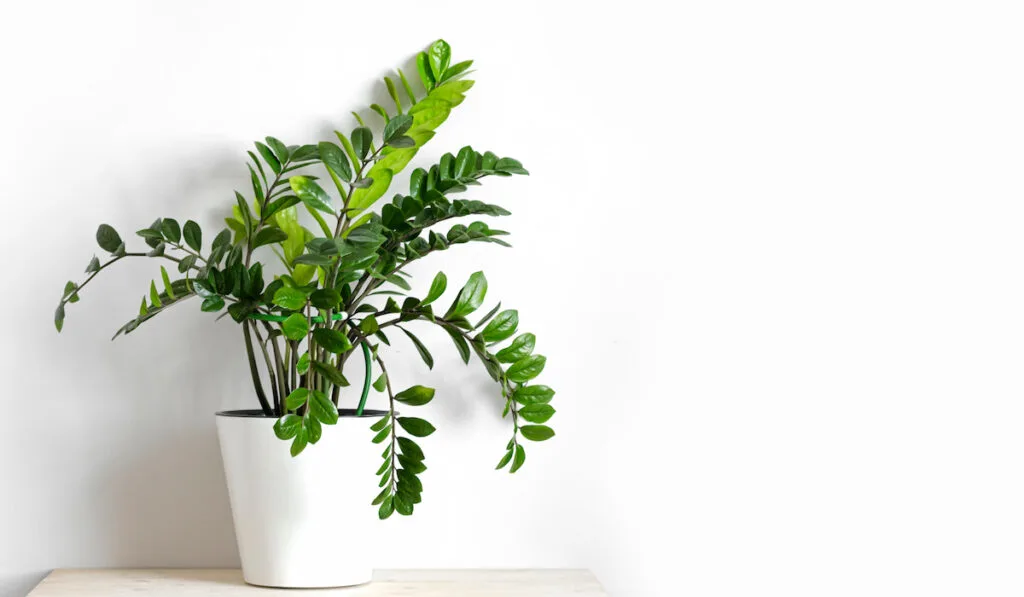
Next to the snake plant, the ZZ plant is a close second when it comes to tolerating extremely low light conditions.
Some argue that the ZZ plant can survive with no natural light at all.
But that’s not all. The ZZ plant is also quite drought-hardy and, therefore, doesn’t need regular watering. Even so, it has quite the show-stopping look with its rich, glossy green foliage.
Thng said, the plant will excel in bright conditions with indirect light.
- Light conditions: Partial to full shade
- Safety: Toxic to pets and humans
- Mature size: 2 to 4 feet wide and tall
8. Dieffenbachia
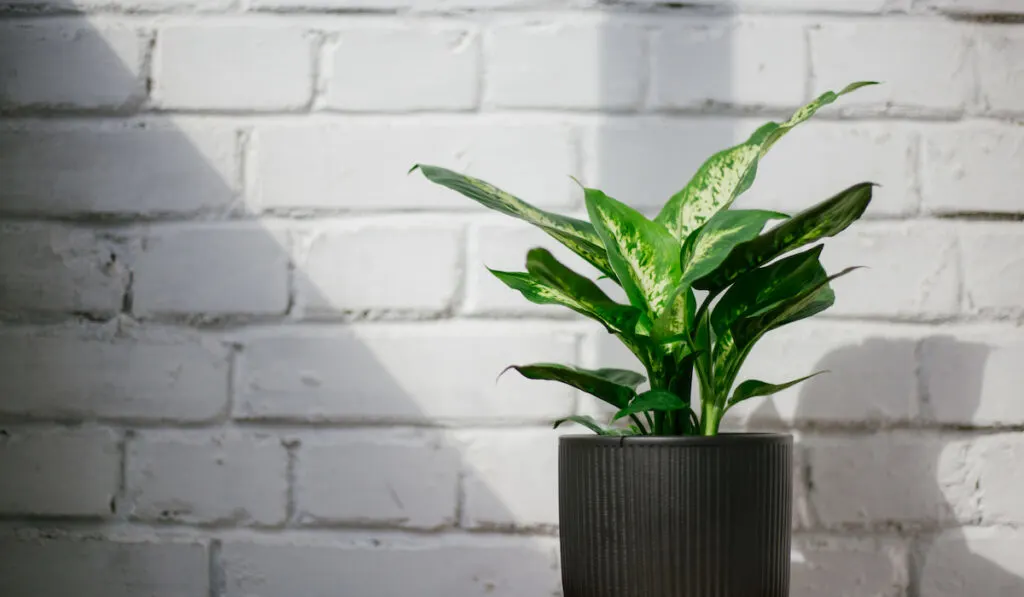
You will love the Dieffenbachia if you are looking for a less temperamental low-light houseplant. With this beauty, you do not have to worry about where you place it.
Dieffenbachia will survive in:
- Direct light
- Medium light
- Low light
That being said, this tropical beauty will grow best in a bright spot with indirect light; otherwise, it will become leggy.
What’s more, Dieffenbachia plants are among the most diverse with a variety of splotched or speckled foliage that is either white and green or green and yellow.
- Light conditions: Partial to full shade
- Safety: Toxic to humans and pets
- Mature size: 3 feet tall
9. Ponytail Palm

Being a succulent, the ponytail palm stores water in its trunk, causing it to expand and look like an elephant’s foot.
As such, ponytail palms are among the easiest houseplants to grow as far as light and water requirements go. They are truly beginner friendly.
You will love the ponytail palm if you are looking for an easy houseplant.
- Light conditions: Partial to full shade
- Safety: Safe for humans and pets
- Mature size: 6 feet
10. Pothos Ivy
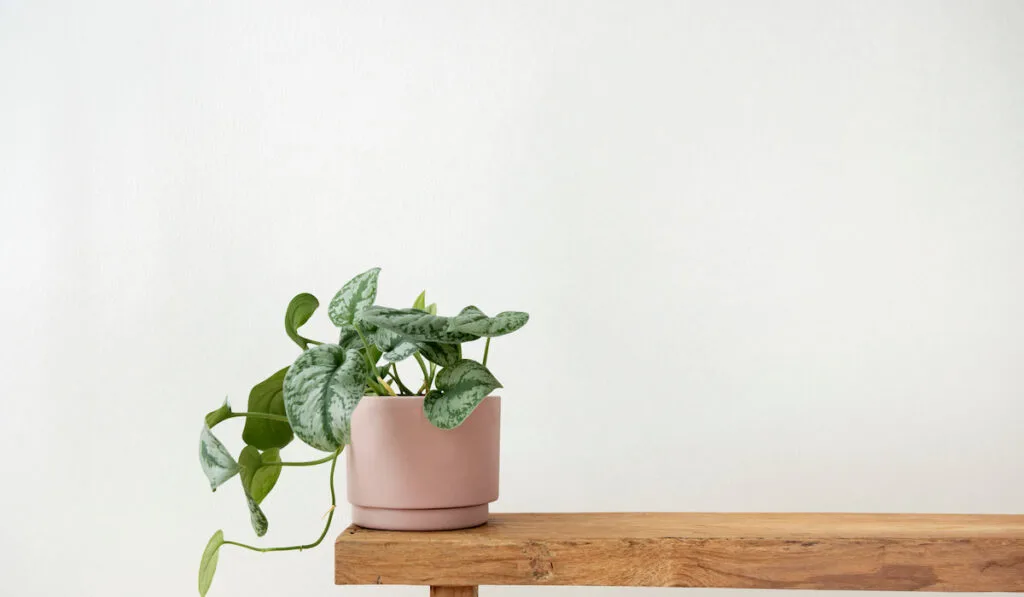
Pothos are trailing plants that can get to a length of 40 feet. This jungle vine makes a great hanging houseplant if you allow it to flaunt its cascading foliage.
These creepers tolerate most light conditions but are at their best in low to moderate lighting.
As far as watering requirements go, it’s best to allow the soil to dry out before the next watering.
Pothos ivy comes in various solid and mixed colors, including:
- White-and-green
- Dark green
- Yellow-and-green
- Chartreuse
- Spotted silver
Light conditions: Partial to full shade
Safety: Toxic humans and pets
Mature size: Up to 40 feet long
11. Spineless Yucca

Unique houseplants don’t get better than spineless Yucca.
While the plant tolerates low light conditions indoors, it grows faster when in bright but indirect light.
They are also not needy and will forgive several missed waterings because they are drought hardy and only need water when the topsoil is dry to the touch.
- Light conditions: Partial to full shade
- Safety: Toxic humans and pets
- Mature size: 8 feet tall
12. Nerve Plant
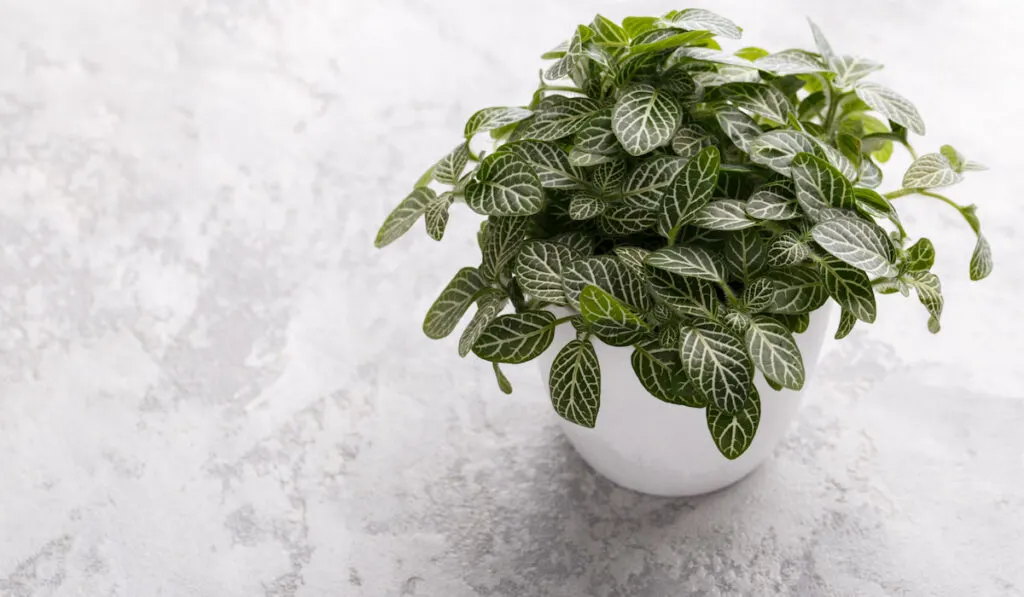
The nerve plant’s colorful foliage will seamlessly blend in with your room’s interior. With this tropical plant, you are spoiled for choice with pink, red, or white nerve-like patterned leaves.
Luckily, the nerve plant can thrive in high humidity as long as the lighting is indirect.
- Light conditions: Partial to full shade
- Safety: Safe for humans and pets
- Mature size: 8 feet tall
13. Schefflera arboricola
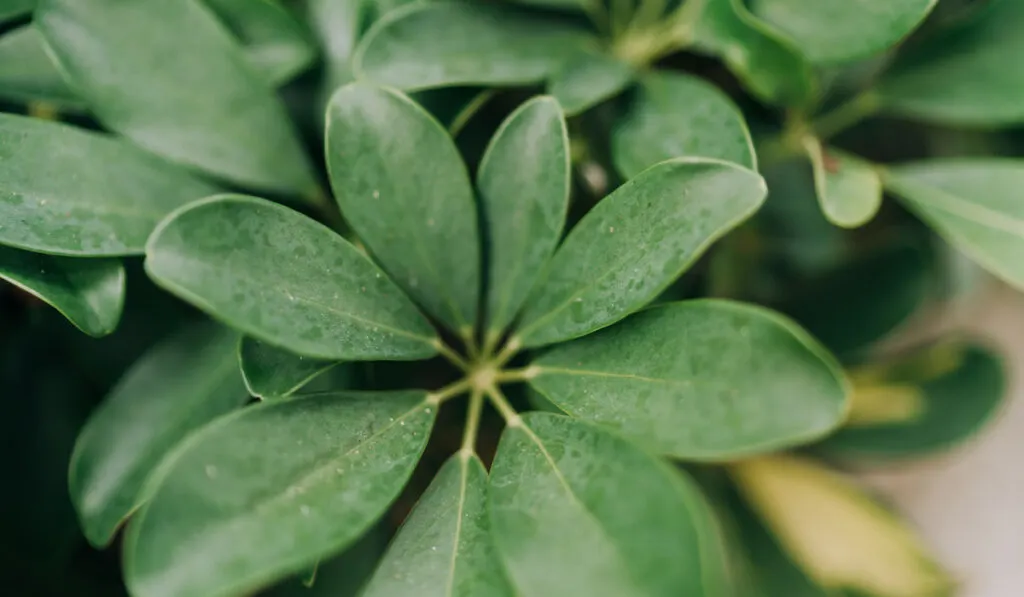
The Schefflera arboricola is also known as the dwarf umbrella tree and is ideal for anyone looking for a potted tree that can handle low light.
Dwarf umbrella trees will also survive within one foot of an artificial light source.
Thng said, consider changiup the lighting if you find your tree growing slowly or becoming leggy.
- Light conditions: Partial to full shade
- Safety: Toxic to humans and pets
- Mature size: 6 feet tall
14. Peace Lily

The peace lily is a renowned low-light houseplant that, unlike other plants, blooms even in low-light conditions.
Though a peace lily is happy in the shade, it requires constant moisture to keep the foliage from wilting.
- Light conditions: Partial to full shade
- Safety: Toxic to humans and pets
- Mature size: 4 feet tall
15. Spider Plant

The spider plant is another beginner-friendly houseplant thanks to its adaptable nature. It grows in various light conditions, making it the perfect low-light plant for various homes.
Give a spider plant well-drained soil and frequent watering and watch it grow its variegated or green foliage, even under artificial lighting.
- Light conditions: Partial to full shade
- Safety: Safe for humans and pets
- Mature size: 2 feet tall
Final Thoughts
There you go, fellow plant lovers. As you can see, the list of low-light houseplants is substantial. Keep in mind, however, that low-light conditions do not mean total darkness. Few plants can thrive in total darkness, meaning that most need some degree of sunlight.
Resources
- https://www.architecturaldigest.com/gallery/best-low-light-indoor-plants
- https://www.hgtv.com/outdoors/flowers-and-plants/houseplants/14-indoor-plants-for-low-light-pictures
- https://www.bhg.com/gardening/houseplants/projects/indoor-plants-for-low-light/
- https://www.housebeautiful.com/lifestyle/gardening/g2628/low-light-houseplants/
- https://www.thespruce.com/low-light-conditions-houseplants-1902917
- https://www.readersdigest.ca/home-garden/gardening/low-light-houseplants/
- https://www.forbes.com/sites/forbes-personal-shopper/article/best-low-light-indoor-plants/?sh=135358fb20ab
- https://www.realsimple.com/low-light-houseplants-7187259
- https://www.bigdogpetfoods.com/guides/plants-and-pets-safe-and-unsafe-plants-for-cats-and-dogs
- https://blog.leonandgeorge.com/posts/what-you-need-to-know-cast-iron-plant
- https://www.thespruce.com/grow-cast-iron-plants-aspidistra-1902740
- https://anthuriuminfo.com/en/here-are-the-various-colours-of-anthuriums-as-cut-flowers-and-plants/
- https://thegardeningcook.com/dieffenbachia-poisoning/
- https://www.bigdogpetfoods.com/guides/plants-and-pets-safe-and-unsafe-plants-for-cats-and-dogs
- https://houseplantcentral.com/spineless-yucca/
- https://www.peta.org/living/animal-companions/common-houseplants-poison-toxic-animals/
- https://gardengoodsdirect.com/products/snake-plant-fernwood-mikado
- https://planterina.com/products/sansevieria-fernwood-mikado
